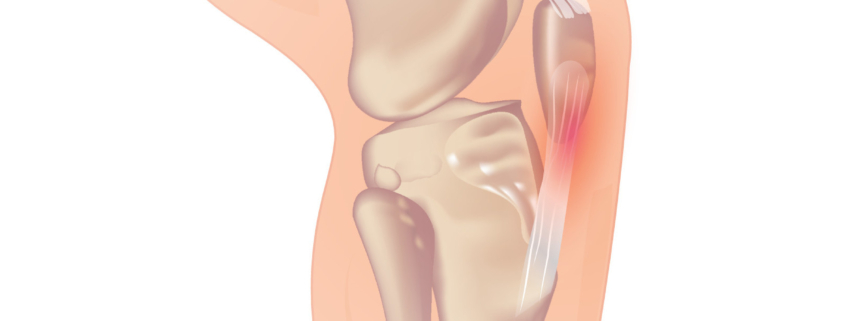Jumper’s Knee

Overview
Jumper’s knee, also known as patellar tendonitis, is a common condition that primarily affects athletes who participate in sports that involve jumping such as basketball and volleyball, although it can affect non-athletes as well. This condition involves inflammation or injury to the patellar tendon which connects your kneecap (patella) to your shinbone.
Types
Jumper’s knee typically falls into two categories, based on how the condition developed over time:
-
- Acute: This results from excessive force applied to your knee or from repeated stress or pounding over time.
-
- Chronic: This develops over time and is a result of prolonged stress on the patellar tendon.
Causes
The primary cause of jumper’s knee is excessive force on the knee, most commonly due to overuse in sports or physical activity. Factors contributing to this condition include:
-
- Repeated jumping or landing
-
- Tight leg muscles
-
- Uneven leg muscle strength
-
- Misalignment of your leg or foot
-
- Being overweight or obese
Symptoms
Symptoms of jumper’s knee can vary, but the most common include:
-
- Pain directly over the patellar tendon
-
- Swelling
-
- Pain that gets worse with jumping, running, or walking
-
- Stiffness in the knee, especially in the morning
-
- Weakness in your leg or calf
Diagnosis
A diagnosis of jumper’s knee usually includes a physical examination and a discussion of your symptoms and medical history with your healthcare provider. Tests that can be used to confirm the diagnosis include:
-
- X-rays: To rule out bone disorders
-
- MRI or ultrasound: To view the patellar tendon in detail
Treatment Options
Treatment for jumper’s knee usually begins with conservative, non-surgical methods which include:
-
- Rest and avoiding activities that exacerbate the knee pain
-
- Physiotherapy for conditioning and stretching exercises
-
- Pain medications like ibuprofen or naproxen
-
- Patellar tendon strap to reduce strain on the tendon
-
- Corticosteroid injections to reduce inflammation
-
- Platelet-rich plasma (PRP) injections to heal the tendon
Some severe cases might require surgery.
Living With Jumper’s Knee
Managing jumper’s knee often includes lifestyle changes:
-
- Regular strength-training and conditioning exercises
-
- Proper footwear for sporting activities
-
- Warming up before sports
-
- Stretching after physical activity
-
- Maintaining a healthy weight
When to Seek Help
It’s important to seek medical attention if:
-
- Pain or swelling is persistent or severe
-
- You are unable to put weight on the affected leg
-
- There is significant loss of range of motion in the knee
Understanding jumper’s knee is the first step in managing this condition. Always reach out to your healthcare provider for accurate diagnosis and treatment options. Remember, the information in this guide is for education purposes and not meant to replace professional medical advice.
